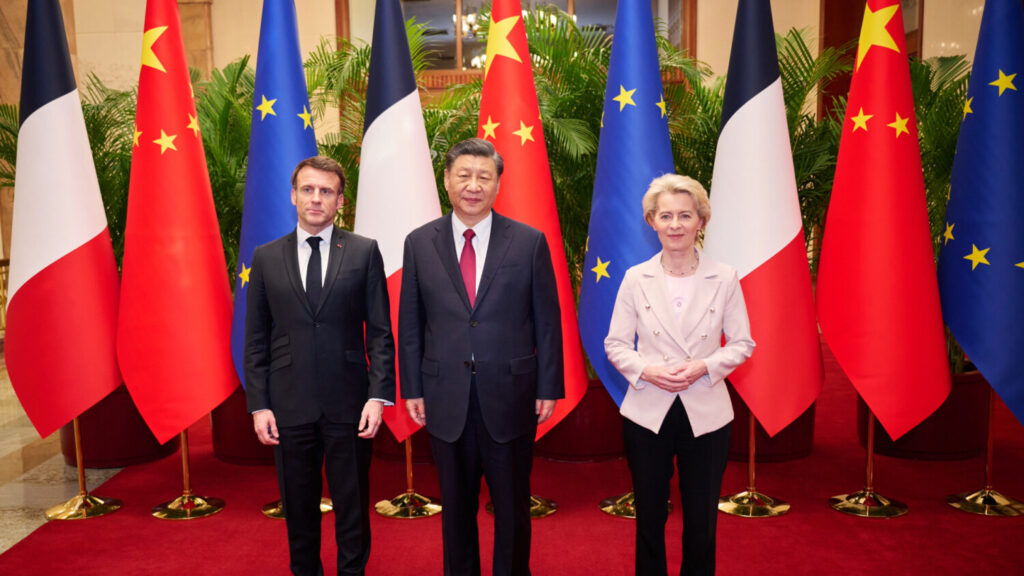China’s Demographic Crisis: A Challenge for the Future
Over the past decade, China has witnessed a sharp decline in birth rates, raising concerns about the country’s long-term economic and social stability. Once celebrated for its rapid economic growth and vast population, China is now grappling with a demographic crisis that could profoundly reshape its future. With birth rates plummeting and an aging population rising, the world’s once most populous nation is grappling with a crisis that could undermine its economic ambitions and social stability. Understanding the causes and consequences to this demographic shift is crucial to predicting China’s trajectory in the coming decades.
A Historical Perspective
China’s approach to population control has undergone significant shifts over the past seven decades. In the early years of the People’s Republic of China, Chairman Mao Zedong was generally favourable to demographic growth, believing a large population would strengthen the country’s defence and act as deterrence to international conflicts. This led to a rapid population boom, with China’s population soaring from 540 million in 1949 to over 940 million by 1976. However, by the 1970s, concerns over resource scarcity and economic sustainability prompted the government to take a drastic turn.
In 1979, China introduced the one-child policy as an initiative to curb overpopulation. Under this policy, urban couples were restricted to having only one child, while rural families and ethnic minorities were granted exceptions. The new law was enforced through a system of financial penalties, workplace pressures and, in extreme cases, forced abortions and sterilisation. While it succeeded in containing the demographic increase, it also led to unintended consequences, including a skewed gender ratio in favour of male children, and a rapidly aging population. After decades of enforcement, the policy was officially abolished in 2015, allowing couples to have two children, with the limit increased to three in 2021. Despite these changes, recent evidence shows that China is struggling to reverse the demographic decline.
The Decline in Birth Rates
Although China’s birth rate has fluctuated throughout its history, the past seven years have seen a consistent downward trend, reaching an all-time low in 2023. When Xi Jinping assumed leadership in 2013, the birth rate stood at 13.03 per 1000 people. Today, that number has nearly halved. According to the National Bureau of Statistics, China recorded just 9 million births in 2023 – down from 18.83 million in 2016 when the two-child policy briefly boosted birth rates. Meanwhile, the fertility rate, which measures the average number of children per woman, fell to a record low of 1.09 in 2022 – far below the replacement level of 2.1 needed to sustain population levels. Demographers warn that unless the government effectively addresses the barriers to childbearing, birth rates will likely continue to decline. While authorities have implemented new economic measures to support demographic goals, many couples remain hesitant due to rising living costs, career pressures and evolving societal views on parenthood. As a result, China faces the challenge of a shrinking workforce and a growing elderly population, placing significant pressure on both its economy and healthcare system.
Economic and Social Implications
The reasons behind China’s declining birth rate extend beyond the legacy of the one-child policy. High childcare and education costs, as well as job market uncertainty, deter many couples from having children. Gender discrimination and traditional expectations that women serve as primary caregivers, further exacerbate the issue. In a 2023 speech, President Xi Jinping emphasised the role of women in building a strong nation and achieving national rejuvenation. Consequently, the State Council introduced 13 new measures aimed at boosting birth rates, including tax deductions, extended maternity leave and subsidies for childcare services. However, these policies have received mixed reactions. While maternity leave extensions are a crucial demographic measure, many women remain concerned about their financial, marital and employment rights.
Moreover, the reluctance to have children is closely linked to China’s rising youth unemployment rate, which officially exceeds 20%, but is believed to be even higher. The rise of the “tang ping” (“lying flat”) movement – a passive protest against societal pressures – reflects growing dissatisfaction with economic prospects. This discontent extends beyond youth culture, as even state media has recently mocked sluggish Party officials in television parodies, highlighting broader frustrations with governance.
This shift in societal attitudes threatens the long-standing social contract between the Communist Party and the population, where citizens have historically accepted strict government control in exchange for economic stability and rising living standards. A decline in public trust in Xi Jinping’s leadership could pose a more significant challenge than demographic trends alone, potentially undermining the Party’s long-term authority.
Conclusions
Despite policy shifts allowing larger families, it remains uncertain whether Chinese couples will choose to have more children. High healthcare costs, economic instability and growing pessimism about the future continue to discourage childbearing. Addressing these challenges will require more than government advocacy – it will demand extensive economic reforms and social policy adjustments. However, neither appears imminent.
Given the current trajectory, a declining population could lead to a severe labor shortage, weakening China’s position as the world’s manufacturing hub and reshaping the global economy. The demographic crisis, therefore, is not just a domestic issue: it is one with far-reaching implications for China’s economic power and global influence.
Bibliography
Chan, T., “China introduces 13 measures to boost and support childbirth”, Human Resources Online, 2024. Available at:
https://www.humanresourcesonline.net/china-introduces-13-measures-to-boost-and-support-childbirth
“China’s One-Child Policy”, Asia Pacific Foundation of Canada. Available at:
https://asiapacificcurriculum.ca/learning-module/chinas-one-child-policy
Howden, D. and Zhou, Y., “Why Did China’s Population Grow so Quickly?”, The Independent Review, vol. 2, n. 20, 2015. Available at:
https://mpra.ub.uni-muenchen.de/79795/
Huang, W., “How does the one child policy impact social and economic outcomes?”, IZA World of Labor, 2017. Available at:
https://www.econstor.eu/handle/10419/171195
Master, F., “China’s population drops for second year, with record low birth rate”, Reuters, 2024. Available at:
https://www.reuters.com/world/china/chinas-population-drops-2nd-year-raises-long-term-growth-concerns-2024-01-17/#:~:text=LESS%20BABYMAKING,exacerbate%20the%20issue%2C%20demographers%20say
Peng, L. et al., “Changes in online public opinions associated with various three-child supportive policies in China: Observational study using social media data over time”, PLOS ONE, 2024. Available at:
https://journals.plos.org/plosone/article?id=10.1371/journal.pone.0306698#references
Zhang, P., “Lunar New Year: why a skit about lying-flat cadres is China’s Spring Festival gala hit”, South China Morning Post, 2023. Available at: https://www.scmp.com/news/china/politics/article/3207719/lunar-new-year-why-skit-about-lying-flat-cadres-chinas-spring-festival-gala-hit



